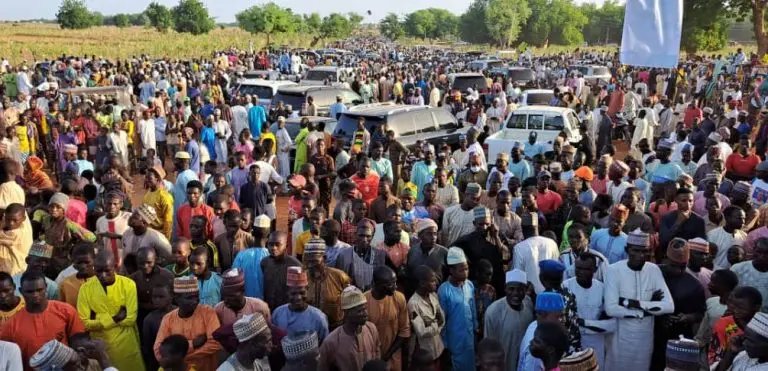3 Poverty Dominated States In Nigeria

In a nation rich with abundant resources, one might expect its citizens to prosper, but Nigeria presents a different reality. This is especially evident in the poverty-stricken regions of the country.
Although factors such as insurgency play a role, much of the difficulties faced by these areas stem from the mismanagement of resources and the pervasive influence of corruption. Our evaluation takes into account key indicators like quality of life, poverty rates, and the human development index to rank these states.
Fundamental necessities such as healthcare, education, nutrition, and access to clean cooking fuel are sorely lacking in these regions, contributing significantly to their low rankings. The National Bureau of Statistics paints a grim picture, stating that a staggering 63% of Nigerians experience multidimensional poverty. This translates to roughly 134 million people living without access to vital amenities, including healthcare, clean energy, and sanitation.
Despite Nigeria's claim as an economic powerhouse of Africa with a population of around 220 million, the disheartening truth remains that a significant portion, especially in the north (approximately 65-66%), grapples with multidimensional poverty.
The concept of poverty extends beyond monetary limitations, encompassing the absence of essentials like education, clean water, and proper sanitation.
READ ALSO » Top 8 Most Insecure States In Nigeria 2024
This piece delves into the three most impoverished states in Nigeria. The North hosts a disproportionately high number of impoverished individuals, with 65% (86 million) of the nation's poor residing there, while the South accommodates the remaining 35% (47 million).
3 Poverty Dominated States in Nigeria
- Sokoto State
- Bayelsa State
- Jigawa State
1. Sokoto State

Population of approximately 7 million residents and stands as one of the nation's most economically challenged regions. The state is particularly notable for harboring an alarming concentration of impoverished individuals, a figure that isn't proportional to its overall populace. Specifically, the state accommodates an estimated 5.81 million individuals grappling with poverty, a circumstance marked by limited access to fundamental amenities like clean water, proper sanitation, education, healthcare, and adequate nutrition.
The statistical data from the National Bureau of Statistics (NBS) underscores the dire situation. In Sokoto State, a staggering 84.8% of the population over 8 out of 10 people are classified as multidimensionally poor. Furthermore, within this category, 78.5% or 4 out of 5 individuals reside in dwellings constructed from rudimentary or natural materials, revealing the extent of their housing-related deprivation. These alarming indicators spotlight the pressing need for comprehensive intervention to alleviate the multifaceted challenges faced by Sokoto State's population.
2. Bayelsa State

situated within the Niger Delta region of Nigeria, harbors a population of roughly 3 million inhabitants, rendering it the least populous state in the nation. Despite its extensive reserves of natural gas, the state continues to grapple with significant poverty levels, maintaining a multifaceted poverty index of 0.401. This unfortunate reality translates to approximately 2.61 million individuals residing in poverty within the state.
Surprisingly, even though Bayelsa State contributed $29.97 billion to the GDP in 2021, securing a notable position nationally, this economic achievement has failed to alleviate its status as one of Nigeria's poorest states. Worryingly, a staggering 81.1% of the state's population faces severe food insecurity, while 81.0% lack access to improved sanitation facilities. Additionally, 74.2% of individuals in Bayelsa are devoid of clean cooking fuel, highlighting the various challenges plaguing the region.
In summation, Bayelsa State's small population and significant natural gas resources contrast starkly with its prevalent poverty levels. Despite its noteworthy economic contribution, the state grapples with a multitude of deprivations, affecting the majority of its citizens.
3. Jigawa State
Jigawa state situated in the northeastern region of Nigeria and sharing borders with states like Kano and Katsina, holds a population of approximately 9 million residents. This state also serves as a key Nigerian gateway to several West African nations. Regrettably, Jigawa State grapples with substantial poverty, emerging as one of Nigeria's most impoverished regions. The Multidimensional Poverty Index (MPI) for the state stands at 0.385, signifying that around 5.76 million individuals out of the total 9 million are affected.
READ ALSO » Top 13 Richest States In Nigeria 2023
Tragically, a significant proportion of Jigawa State's population faces multidimensional poverty challenges. An estimated 76.3% of residents experience multidimensional poverty, dwelling in shelters constructed from rudimentary materials such as wood and bamboo, lacking proper roofing. Furthermore, over 67.0% of the populace lacks access to clean cooking fuel, impacting approximately 65.9% in terms of securing nutritious meals.
Despite the state's GDP reaching $13.97 billion in 2021, due in part to its strategic role as a border state facilitating trade with neighboring African countries, the deeply entrenched poverty persists. Economic advancements have yet to alter Jigawa State's status as one of Nigeria's primary poverty-stricken regions.
